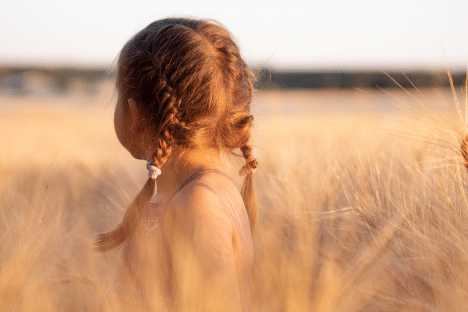Learn Advanced Concepts with Holistic Language Acquisition
We believe that children learn advanced concepts more quickly when interacting and being involved in conversation and play. Reading a story to a child is a gentle, oblique method of teaching life lessons, stimulating imagination, and improving reasoning skills. Visual art and spoken language complement each other in telling a story, while the act of reading itself is an opportunity for dramatic expression that forms a bond between the reader and listeners. Open-ended stories are an invitation to a conversation, an opportunity to impart personal knowledge and moral beliefs. Also, it is a great way to help children settle down and get a good night’s sleep.
Holistic Language Acquisition is an approach that involves multiple types of thought processes to learn new words and ideas. When we learn a language, we use different aspects of our memory: auditory, visual, analytical, associative, and kinetic. We then need to integrate this new knowledge to become part of our active vocabulary to be recalled quickly and effortlessly.
The use of art and cultural references in children’s learning materials magnifies our ability to learn a language because it inspires and motivates us. Holistic Language Acquisition provides incentives to learn a language by reducing repetitive drills, which are frequently employed in traditional teaching methods. It increases the frequency of positive experiences.
Our products are not intended to substitute traditional education but complement it and make it more effective to enhance its results. Our writer’s group demonstrates how the Holistic Language Acquisition approach can be applied to three very different cases:
 “Erika Nielsen writes for young children who are learning new words and ideas in their native language.”
“Erika Nielsen writes for young children who are learning new words and ideas in their native language.”
 Annemarie Waugh is writing for English-speaking adults who are becoming acquainted with British English and are learning new words and phrases in the process.
Annemarie Waugh is writing for English-speaking adults who are becoming acquainted with British English and are learning new words and phrases in the process.
 “Li Hong Snyder is writing for non-native speakers of Mandarin, who are taking a great cultural and linguistic leap, but visual art, songs, and cultural interpretation help guide them through this novel experience.”
“Li Hong Snyder is writing for non-native speakers of Mandarin, who are taking a great cultural and linguistic leap, but visual art, songs, and cultural interpretation help guide them through this novel experience.”
You must be logged in to post a comment.